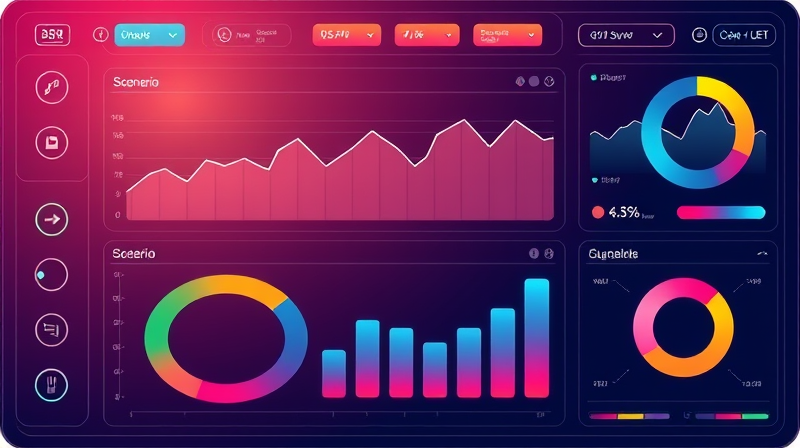
In an era defined by policy shocks, geopolitical shifts and rapid technological change, understanding which indicators truly matter can be the difference between seizing opportunity and being blindsided by risk. Macro strategists in 2025 lean on a sophisticated toolkit of data signals to anticipate turning points, validate forecasts and navigate uncharted economic waters.
Composite indexes have long served as the bedrock of macroeconomic analysis. Their appeal lies in aggregating multiple data series into a single gauge, smoothing noise and highlighting underlying trends. Yet in today’s environment—marked by tariff uncertainty and mixed policy signals—these indexes require careful interpretation.
The Conference Board Leading Economic Index (LEI) remains a cornerstone. As of April 2025, the LEI fell 1.0% month-over-month and 2.0% over six months, signaling broad weakness but stopping short of a recession trigger. Paired with the Coincident Economic Index (CEI), which tracks real-time economic conditions, these composites allow strategists to identify cyclical inflection points with greater confidence.
By combining composite indexes with additional data layers, analysts avoid relying on single-point signals that can mislead and instead build a richer, more resilient forecast framework.
When policy changes can occur overnight, lagged statistics lose relevance. Macro teams therefore monitor a suite of high-frequency indicators to capture immediate shifts in economic activity and market sentiment.
These high-frequency metrics allow strategists to adjust positioning quickly, hedging against downside surprises or capitalizing on rapid rebounds.
Quantitative data alone can miss emerging shifts in business confidence and consumer outlook. Survey-based indicators fill this gap, offering early warnings before hard data catches up.
Key surveys include the National Association of Credit Management Credit Managers Index and the National Federation of Independent Businesses Small Business Optimism report. Recent readings from both surveys have flagged rising stress among credit managers and caution among small-business owners.
Meanwhile, consumer expectations—tracked by The Conference Board—have declined steadily since January 2025. This drop has fed into the LEI’s downward signal and serves as a premature alert to weakening demand.
The labor market remains a dual-edged sword: tight unemployment suggests resilience, but certain manufacturing metrics reveal cracks. The average workweek in manufacturing, a LEI component, has recorded negative contributions, hinting at production slowdowns. Building permits, another leading component, have also declined, foreshadowing reduced construction activity.
Strategists interpret these labor and activity signals in tandem with composite indexes, ensuring that one data series does not disproportionately sway their outlook.
Monetary and fiscal policy are central to macro forecasts. With inflation persisting and unemployment near multi-decade lows, the Federal Reserve faces a delicate balancing act. Consensus now expects 25 basis-point rate cuts each quarter from Q3 2025 through 2026, assuming inflation continues to ease.
Longer-term rates—particularly the 10-year Treasury yield—also command attention. Baseline projections foresee yields near 4.25% by late 2024, but a sudden tariff escalation could push them above 5%, signaling heightened recession risk.
By cross-referencing policy signals with forward-looking indicators, strategists guard against policy missteps that trigger abrupt market shifts.
Traditional metrics like GDP often lag real economic developments. As artificial intelligence transforms productivity, strategists are increasingly tracking AI adoption rates, software investment trends and automation output indices. These emerging metrics offer early insight into structural growth drivers, complementing conventional data.
By integrating technology-based productivity measures, analysts cultivate a forward-looking perspective that captures the economy’s evolving heartbeat.
Outlook scenarios for 2025 range from a moderate expansion to a potential downturn. Blue Chip surveys peg U.S. real GDP growth at 1.5% on average, with pessimistic forecasts as low as 0.6% and optimistic calls near 2.2%. Key downside catalysts include persistent supply-chain disruptions, renewed tariff battles and policy errors.
To navigate this uncertainty, strategists maintain a dual approach:
This balanced stance ensures readiness for divergent outcomes and reduces vulnerability to single-source forecasts.
To leverage these insights:
By adopting an integrated, data-driven approach, organizations can anticipate inflection points, validate strategic decisions and stay ahead of market turbulence.
In 2025’s complex global economy, no single indicator holds all the answers. Macro strategists succeed by weaving together leading, coincident, and high-frequency indicators, survey data, policy signals and emerging productivity metrics into a cohesive narrative. This multifaceted approach offers the clarity and agility needed to navigate uncertainty, mitigate risk and seize opportunities as they arise.
Armed with these tools and techniques, investors, corporate planners and policymakers can build robust strategies that endure beyond the next data release, ensuring they remain on the front foot in an ever-evolving economic landscape.
References













